Comparisons like this one between the Hyundai i10 and i20 might seem like they have an obvious conclusion.
The i10 is an excellent city car, with a tiny footprint but lots of passenger space packed into a small frame. Whereas, clearly, the i20 is bigger, with even more passenger space, a larger boot and a higher price tag to match.
If you're shopping on the used market, you might find your budget means you have the option of either of these talented hatchbacks. Keep reading to find out how the Hyundai i10 compares to the Hyundai i20.
Hyundai i10 vs Hyundai i20 compared
| Hyundai i10 | Hyundai i20 |
Pros:
| Pros:
|
Cons:
| Cons:
|
Styling and design

Hyundai has really leaned on its styling department in recent years, pushing them to make its cars look ever more dramatic and eye-catching. Starting with the i10, the front end is arguably a little fussy with a gaping front grille incorporating the fog lights, but the sharp headlights help give it some presence. We prefer the treatment on the rest of the i10's body, with neat creases above the wheelarches and a darkened C-pillar to give the illusion of a floating roof.
Older i20s struggled to stand out among the crowded hatchback market, but the latest model has had a serious glow-up. Angry, angular styling means it looks unlike any other rival, with sharp, faceted bodywork and oversized head and brakelights giving it a unique lighting signature at nighttime. The overall impression is completed by small, pointy styling details like those found on the alloy wheels or the plastic panels where the rear door meets the boot lid.
Interior and practicality
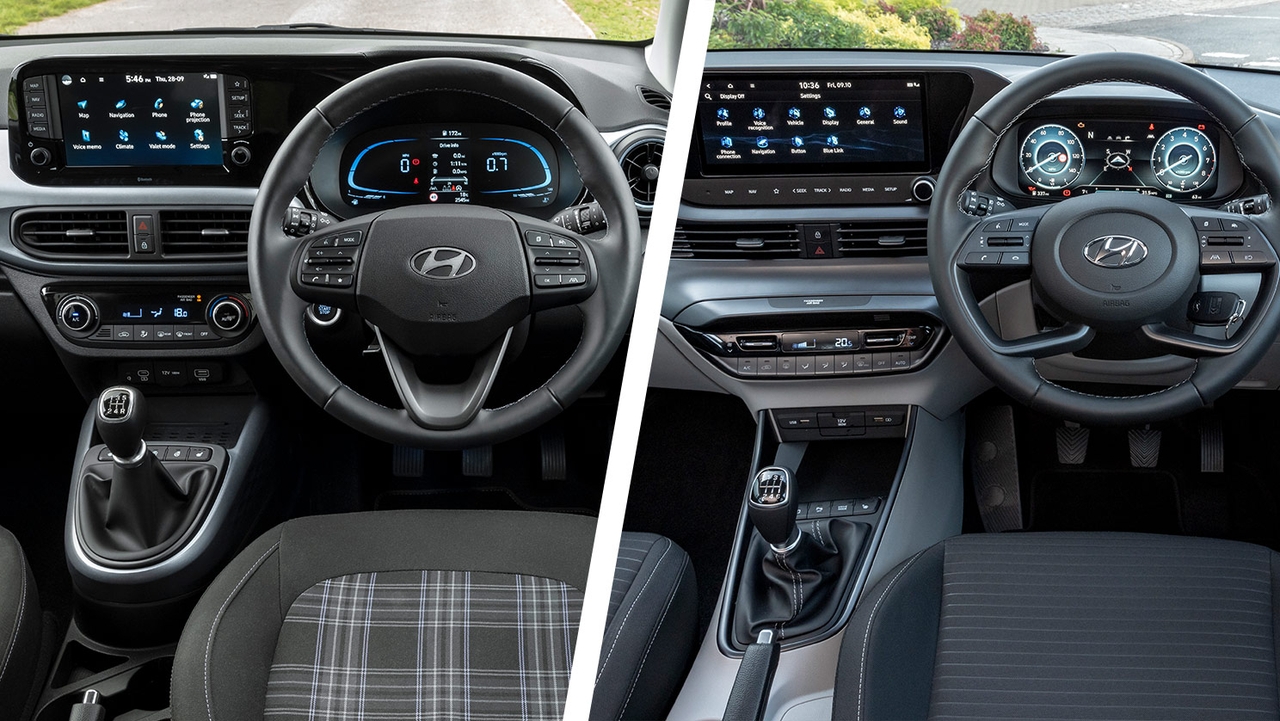
There are broad-brush similarities between the two cars' cabin layouts. Both feature 'pods' that incorporate the infotainment screen and driver's dials sat on top of the dashboard. Below the screens are air vents and physical controls for the heating and A/C, which are fairly easy to use on the move. The i10's dashboard includes a coloured panel with dimples in to break up the design, while the i20's includes horizontal strakes that flow into the air-vent fins. In person, we actually prefer the feel of the materials used in the i10, with the i20 feeling a little harder under the finger.
Hyundai's infotainment software is similar between the two cars. It responds reasonably quickly to inputs and is sensibly laid out. Plus, jumping between functions in both cars is simple thanks to physical shortcut buttons on either side of the screen. Apple CarPlay and Android Auto are standard on all models with a screen, allowing you to mirror your favourite apps through the car's screen.
As for practicality, the i20 obviously takes the win here. It has a larger footprint, meaning more space in the rear seats, with enough room for a six-footer to sit behind another six-footer without grazing their knees on the seat backs. What's remarkable, however, is how close the i10 gets to the larger car with such a small body – there's still space in the back for adults and headroom is essentially the same as the i20 – although the centre-rear seat is extremely narrow. Again, the i20 takes the edge for boot space, with room to spare after storing a large suitcases, while the i10 will be mostly maxed-out with a similar load.
Engines and performance
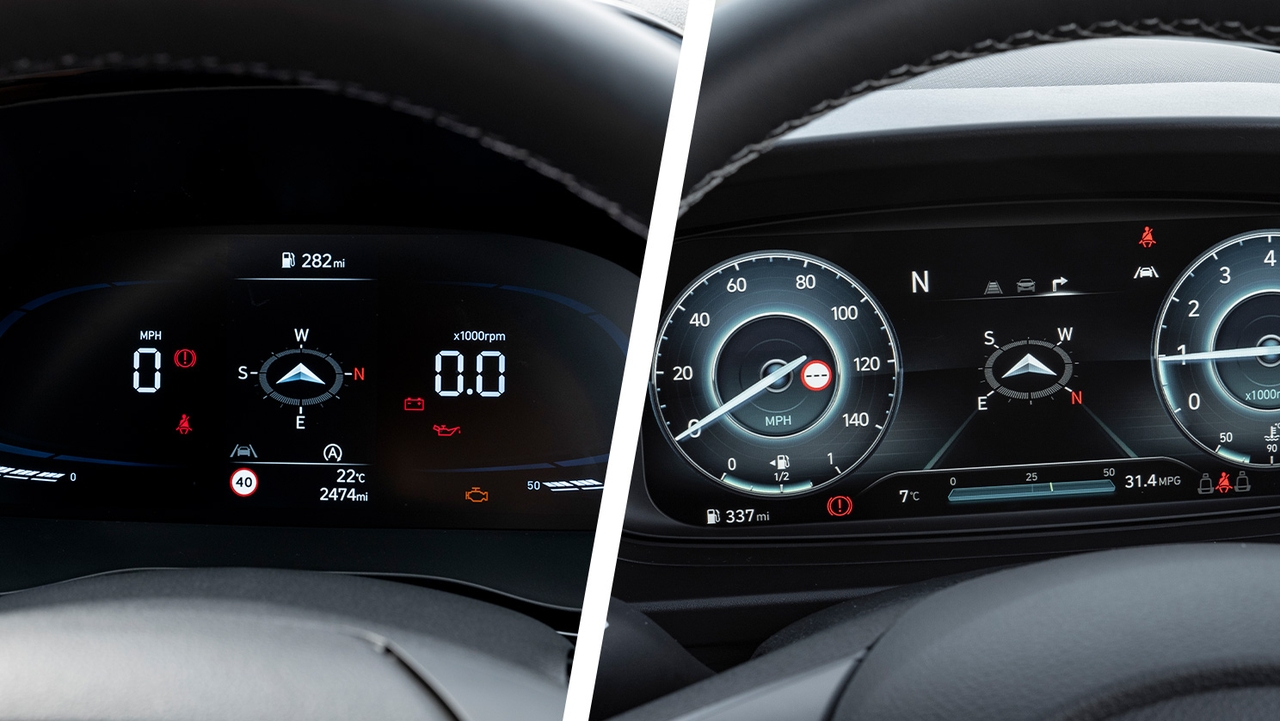
The i10's engine lineup is stocked with simple, affordable petrol units. Entry-level cars use a 1.0-litre, three-cylinder with just 67hp – this is fine for urban driving, but you'll have to thrash the little engine quite hard to keep up with fast motorway traffic. The upgrade option is a 1.2-litre, four-cylinder with 84hp and feels more relaxed at motorway speeds. We'd avoid the five-speed automatic gearbox option, however, because it's jerky and unrefined. At the top of the i10 range is the 1.0-litre turbocharged petrol with 99hp – this is much punchier at low speeds and calmer at higher speeds, but can only be had in the range-topping N Line trim, pushing the price up.
As for the i20, the entry-level engine is the same 1.0-litre turbo that tops the i10's range. With a little more weight to carry around, it's not quite as zippy in the i20 as it is in the smaller car, but there's still enough low-down torque that you don't need to work it hard to keep up with traffic. There's also a 120hp version of this engine in the i20, but it doesn't deliver a lot of extra performance, so it's not an essential upgrade. The i20 is the only one of the two that actually offers a high-performance model. The i20N hot hatch gets a 1.6-litre turbocharged engine with 200hp – a substantial amount of grunt in such a small car, giving it a 6.1-second 0-62mph time.
Driving
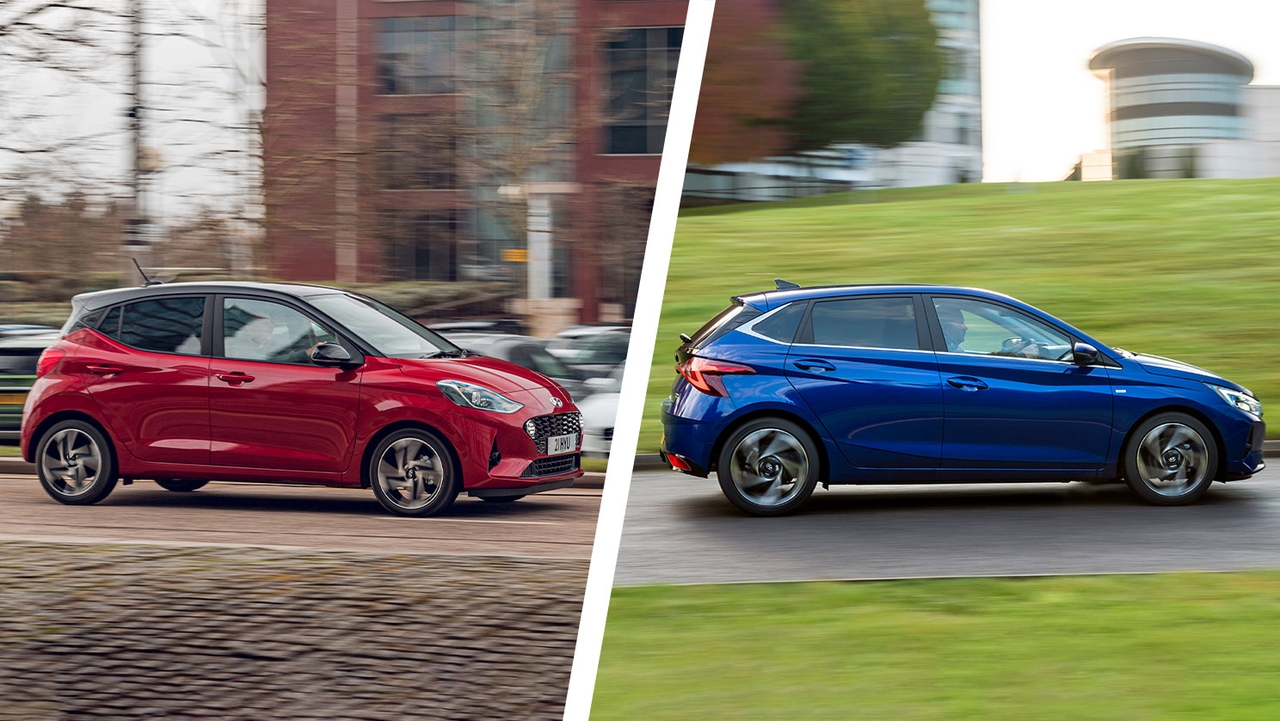
Both cars strike a nice balance on the road – neither is so firm that they're tiring on long journeys, and both have easy, accurate controls with safe, predictable responses. That said, while the i20 is competent, the i10 is truly entertaining to drive. Its short wheelbase, level handling and quick-witted front end lets you fling the car's lightweight body around like a go-kart, while still being stable enough to sit at motorway speeds without feeling nervous. The smaller engines require a heavy throttle foot for fast acceleration, sending a fair amount of noise into the cabin – but this is par for the course for most super-small city cars.
There's little about the way the i20 goes down the road that will offend, however – it's just a bit more grown-up. The handling is predictable and there's a fraction more compliance at motorway speeds. It's still fun to drive on a twisty road too, with good body control and a little more punch from the turbocharged engine lineup to pull you out of corners. Of course, the i20N hot hatch is a different beast altogether – it gets sporty chassis upgrades and a much brawnier engine, delivering a seriously thrilling driving experience that'll give a Ford Fiesta ST a run for its money.
Value and reliability
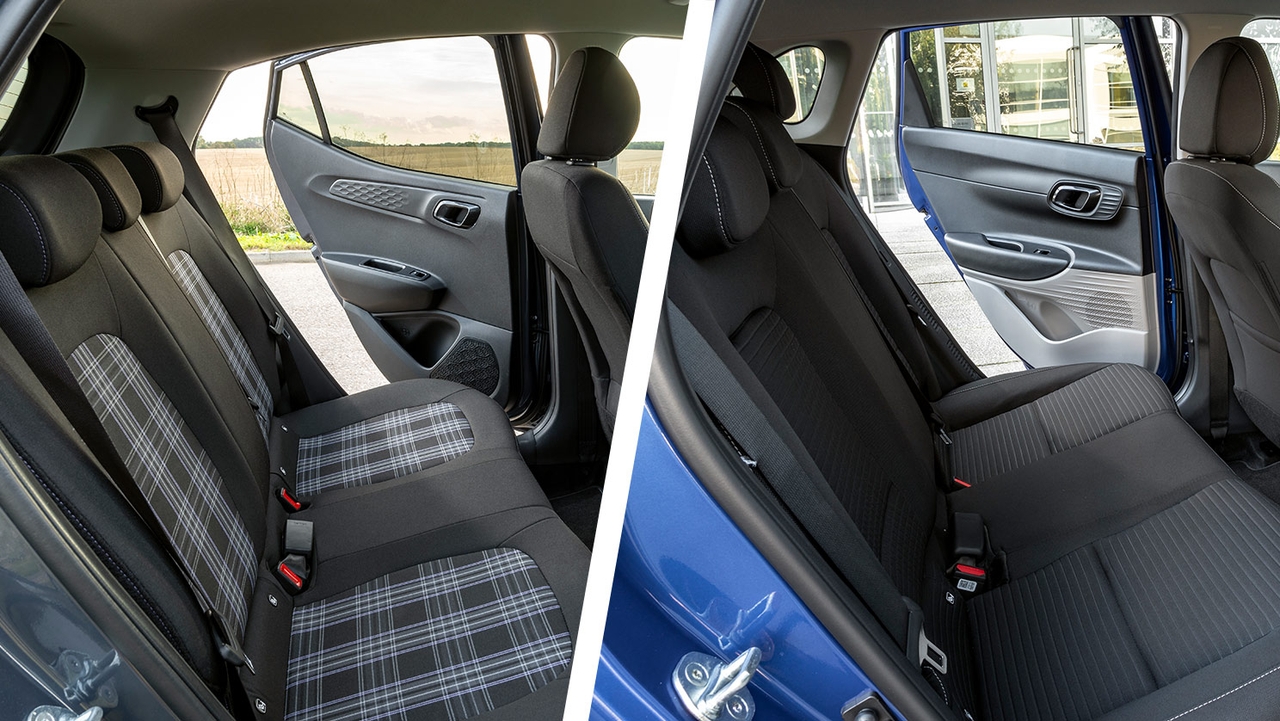
Buyers shopping brand-new models will find, unsurprisingly, that the larger and more powerful i20 costs several thousand pounds more than most i10 models. However, it's worth looking closely at both models on the used market because the price gap narrows slightly – this means you might not need to spend much more to step up from the i10 to the i20. Equipment levels also track each other closely – all cars are well equipped with air conditioning, cruise control, rear parking sensors, Apple CarPlay and Android Auto – and top-spec models get luxuries like heaters for the seats and steering wheel.
Hyundai enjoys a fairly strong reputation for reliability, so neither car should present many headaches provided you keep up with maintenance and servicing. The brand offers a five-year factory warranty – two more than the industry standard – and you can always add an extended warranty for greater peace of mind once the original coverage expires.
Which is best?
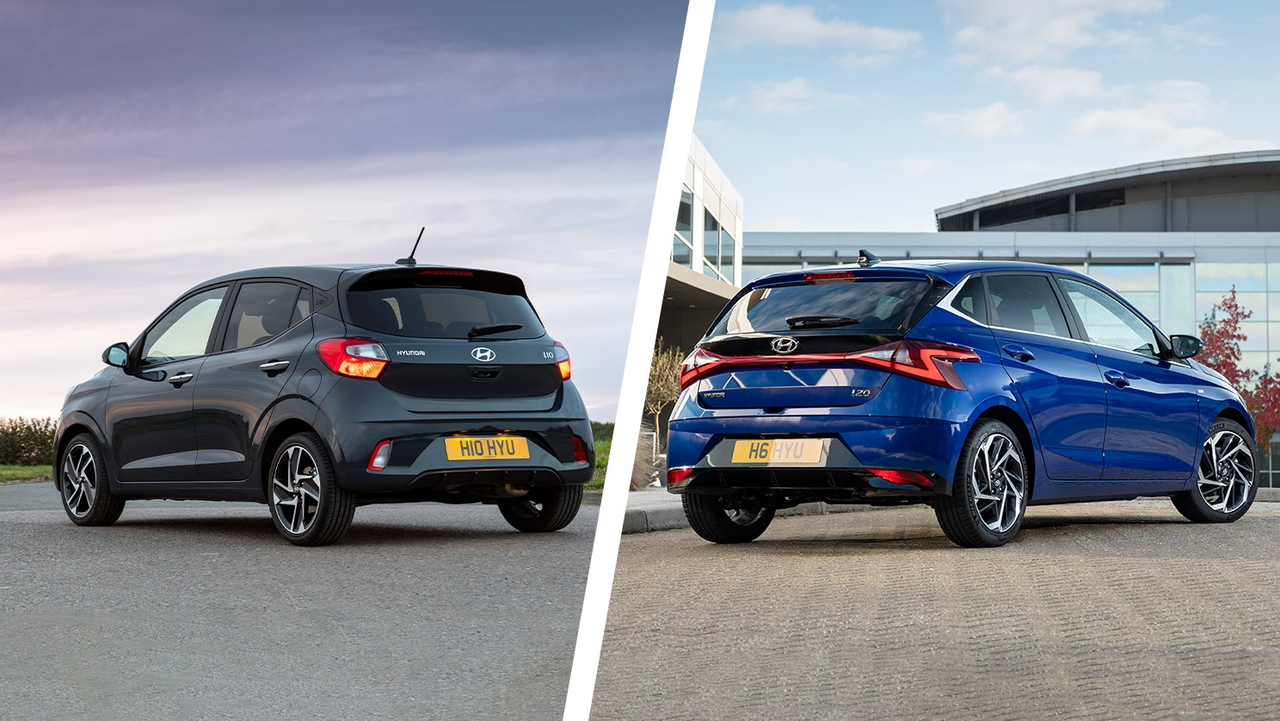
The answer here will mainly depend on your budget and your use case. If you're a single buyer or a couple who only needs the back seats occasionally, the i10 is easy to recommend. It's great fun to drive, easy to use and delivers more practicality than you could reasonably expect from a car that's less than 3.7 metres long.
If you have a small family to kart around, however, or spend more of your time on the motorway, you might appreciate the extra space, compliance and performance you get from the i20. And, with prices on the used market being surprisingly close, you might find an i20 doesn't end up costing much more than an i10 in practice.
Shop great-value used Hyundai i10 and used Hyundai i20 cars at Motorpoint. If you'd like to broaden your search, check out our picks for the best small cars on sale.

































